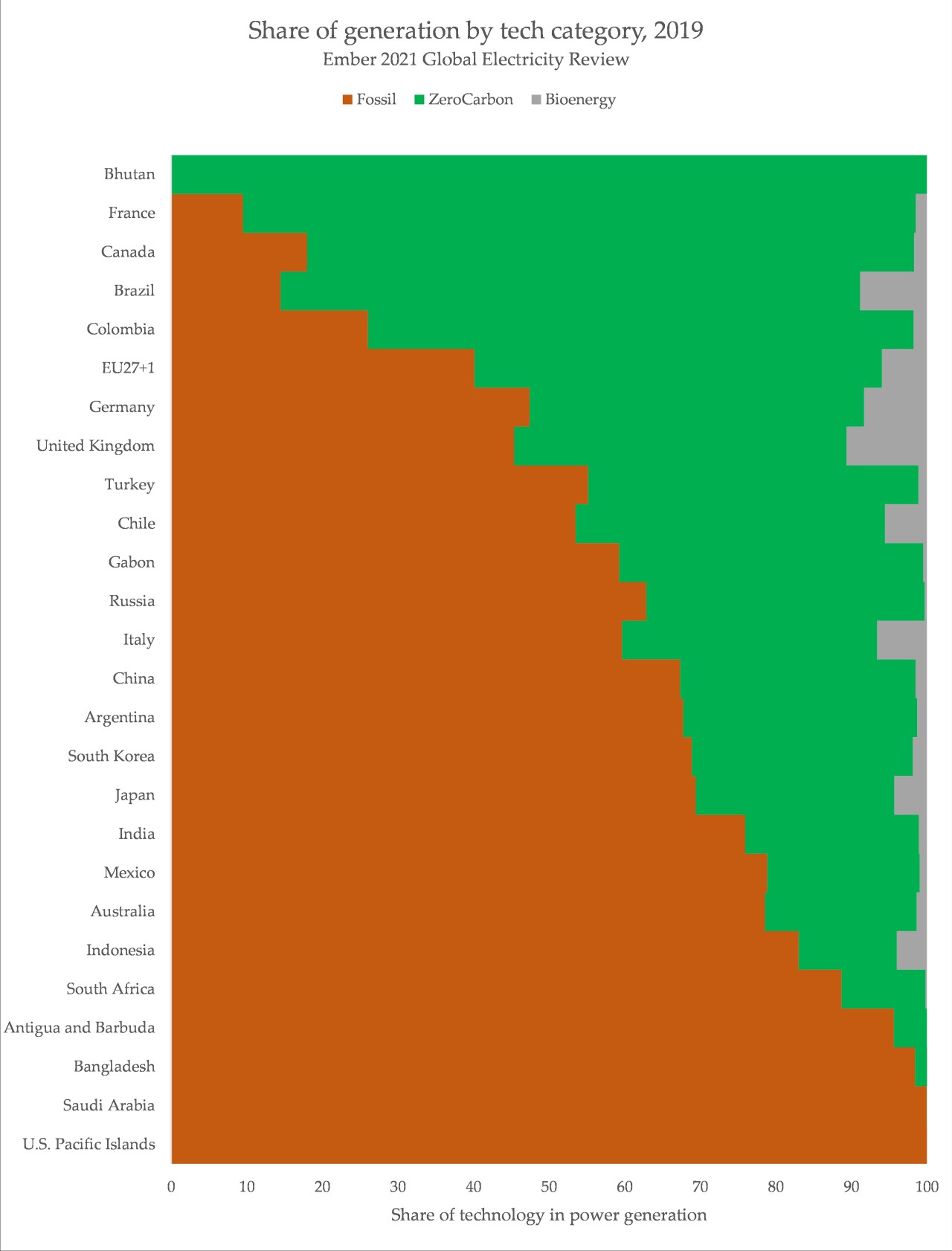One of the more insidious claims at last week’s ‘Leaders Climate Summit’ coming from Australia’s leadership – namely, the Prime Minister Scott Morrison and Energy and Emissions Reductions Minister Angus Taylor – is that Australia has been a global leader in climate action, and particularly for renewable energy.
“We are deploying renewable energy ten times faster than the global average per person. We have the highest uptake of rooftop solar in the world”.
In some senses, it is true. Australia really does have the world’s highest per-capita installations of solar PV, by capacity. The rate of renewable energy growth is uniquely high, though “ten times faster than the global average per person” is hard to verify.
But neither of these take away from the important fact that Australia’s electricity grid continues to have one of the highest shares of fossil fuels in the world. Of the 26 countries or regions that were allocated a speaking slot at the Biden summit, Australia ranks 20th in terms of the share of fossil energy in its electricity grid in 2019 (2020 excluded due to many countries not having data for this time), as shown in Ember Climate’s 2021 Global Electricity Review:
While Australia has a high installation rate of rooftop solar PV, and a fast growth of renewable energy in general, it is also starting from a point of high fossil fuel dependence. That means only countries like Indonesia, Bangladesh and Saudi Arabia have a higher fossil share, of the countries that spoke at the Biden summit.
Excluding the land-use sector, which is reported differently across countries and suffers from wild variations in data across many countries, Australia ranks third last in the list of 45 countries under the UNFCCC’s data, with a change in emissions between 2005 and 2018 of 31.3%. Only Cyprus and Turkey saw a larger increase in emissions.
 While Australia’s government has insisted that it is keen to use technology to reduce emissions, some technologies have been pointedly excluded. Electric vehicles, for instance, have been derided by the government. And Scott Morrison’s first ever visit (or the first ever visit for any minister in the Morrison government) to a solar farm happened only two weeks ago. As RenewEconomy’s Giles Parkinson wrote, Morrison somehow failed to mention solar power at the opening of the solar farm.
While Australia’s government has insisted that it is keen to use technology to reduce emissions, some technologies have been pointedly excluded. Electric vehicles, for instance, have been derided by the government. And Scott Morrison’s first ever visit (or the first ever visit for any minister in the Morrison government) to a solar farm happened only two weeks ago. As RenewEconomy’s Giles Parkinson wrote, Morrison somehow failed to mention solar power at the opening of the solar farm.
A new gas-fired power station – built by the government – is purportedly still on the cards, as is a potential rule change to allow subsidies for coal and gas plants on Australia’s grids. There is a very long way to go before Australia starts to properly crawl up the list.











